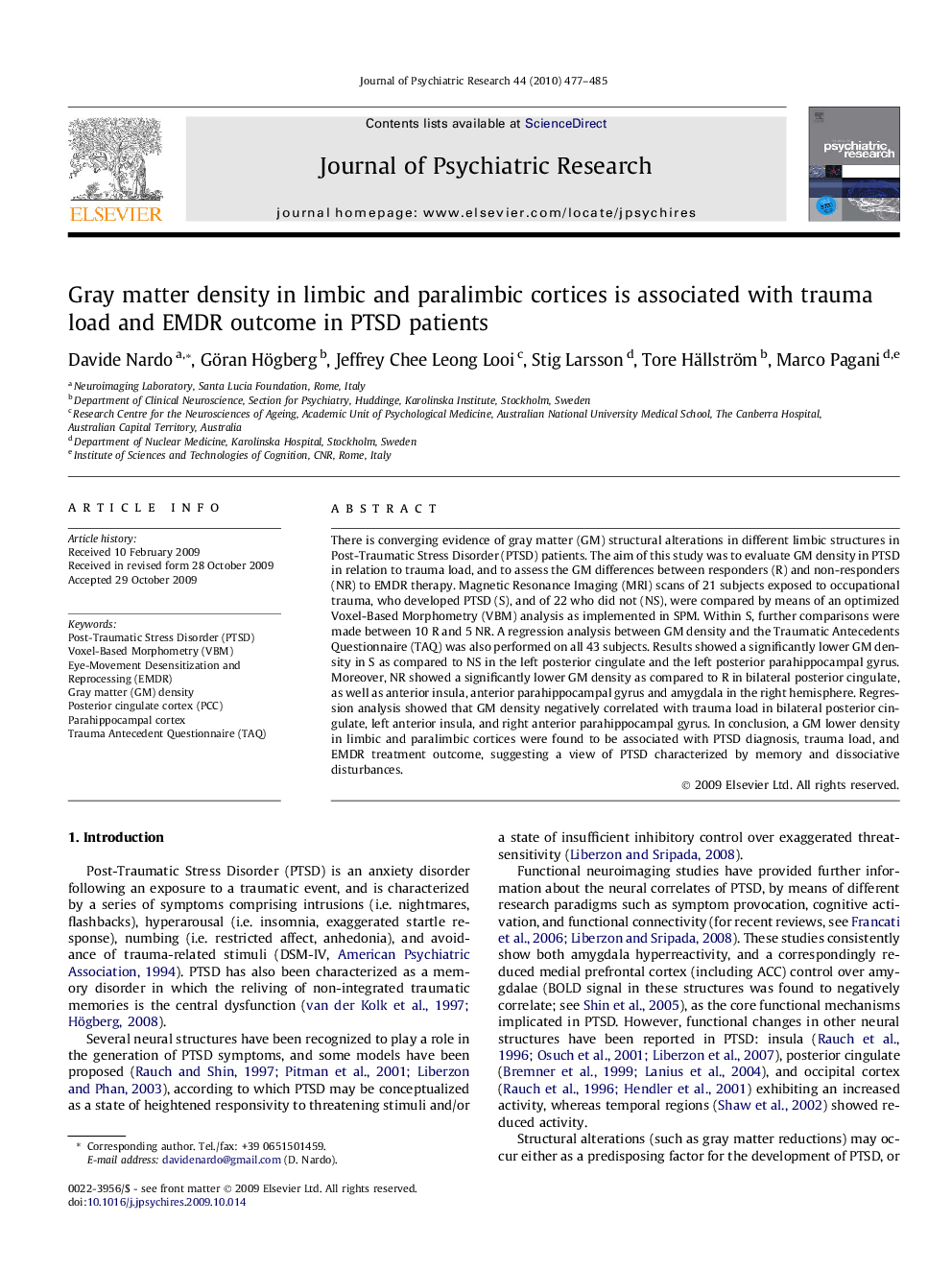| Article ID | Journal | Published Year | Pages | File Type |
|---|---|---|---|---|
| 327502 | Journal of Psychiatric Research | 2010 | 9 Pages |
There is converging evidence of gray matter (GM) structural alterations in different limbic structures in Post-Traumatic Stress Disorder (PTSD) patients. The aim of this study was to evaluate GM density in PTSD in relation to trauma load, and to assess the GM differences between responders (R) and non-responders (NR) to EMDR therapy. Magnetic Resonance Imaging (MRI) scans of 21 subjects exposed to occupational trauma, who developed PTSD (S), and of 22 who did not (NS), were compared by means of an optimized Voxel-Based Morphometry (VBM) analysis as implemented in SPM. Within S, further comparisons were made between 10 R and 5 NR. A regression analysis between GM density and the Traumatic Antecedents Questionnaire (TAQ) was also performed on all 43 subjects. Results showed a significantly lower GM density in S as compared to NS in the left posterior cingulate and the left posterior parahippocampal gyrus. Moreover, NR showed a significantly lower GM density as compared to R in bilateral posterior cingulate, as well as anterior insula, anterior parahippocampal gyrus and amygdala in the right hemisphere. Regression analysis showed that GM density negatively correlated with trauma load in bilateral posterior cingulate, left anterior insula, and right anterior parahippocampal gyrus. In conclusion, a GM lower density in limbic and paralimbic cortices were found to be associated with PTSD diagnosis, trauma load, and EMDR treatment outcome, suggesting a view of PTSD characterized by memory and dissociative disturbances.
